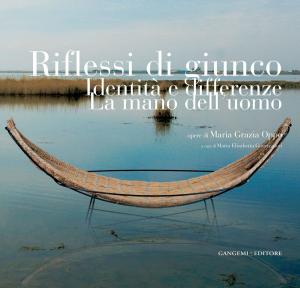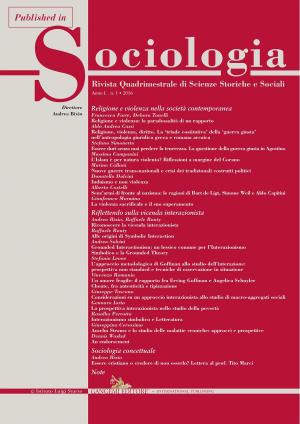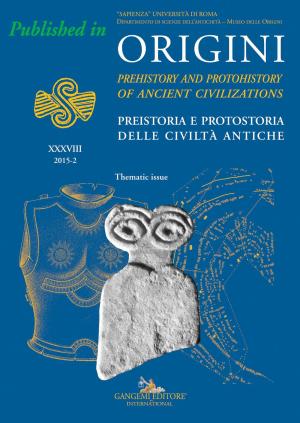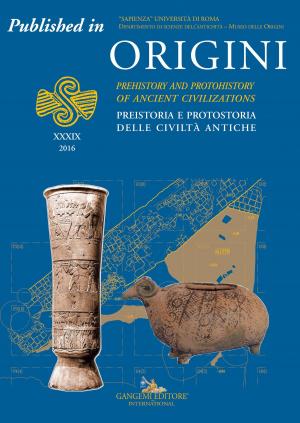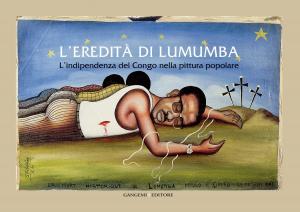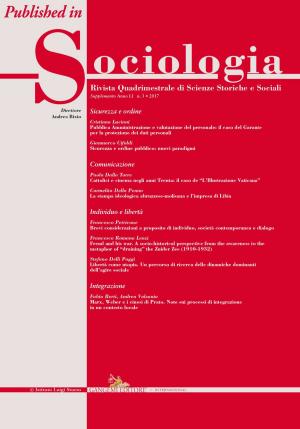The role of burins and their relationship with art through trace analysis at the Upper Palaeolithic site of Polesini Cave
Published in Origini n. XXXIX/2016. Rivista annuale del Dipartimento di Scienze dell’Antichità – “Sapienza” Università di Roma | Preistoria e protostoria delle civiltà antiche – Prehistory and protohistory of ancient civilizations
Nonfiction, Social & Cultural Studies, Social Science, Archaeology, Anthropology| Author: | Cristina Lemorini, Antonio Tagliacozzo, Daniela Zampetti, Magda Bordigoni, Mario Amore, Flavia Venditti | ISBN: | 9788849248302 |
| Publisher: | Gangemi Editore | Publication: | September 29, 2017 |
| Imprint: | Gangemi Editore | Language: | English |
| Author: | Cristina Lemorini, Antonio Tagliacozzo, Daniela Zampetti, Magda Bordigoni, Mario Amore, Flavia Venditti |
| ISBN: | 9788849248302 |
| Publisher: | Gangemi Editore |
| Publication: | September 29, 2017 |
| Imprint: | Gangemi Editore |
| Language: | English |
Polesini Cave is located nearby Tivoli (RM) on the Eastern side of the Aniene river (RM). The cave held archaeological deposits ranging from Late Upper Palaeolithic to Late Roman Empire. The Late Upper Palaeolithic deposits are well known and studied since their richness in both lithic and faunal remains and, moreover, for the conspicuous presence of mobile art and personal ornaments. The huge lithic assemblage found in this site consists of 400.000 chipped stone tools, among which the shaped items are 25.000. Many artefacts made of hard animal material are also present, together with ornaments made out of the same raw materials. The mobile art is represented by various stone pebbles and bones engraved with zoomorphic or geometric patterns that represent the most important evidence of Palaeolithic art in Central Italy. This article presents the results achieved from an investigation on the functional role of one of the most common typological categories of chipped stone tools found at Polesini Cave: burins. Various technological and use-wear studies have shown that the functional role of this type is not univocal. In fact, a “burin like” morphology can be related to an artefact used to engrave but also to scrape; it can be related to a hafting area or, instead to be an artefact, it could be a core or, simply, a technological or a post-depositional accident. Whit this picture in mind, we carried out the experimental and use-wear analysis of a selection of 500 burins coming from ten different layers. The results of the use-wear analysis show that only 20% of the sample holds traces of use, suggesting that a great part of this category was unused. The functional interpretation of the items with use-wear fits well with a systematic use as carving tools on different materials, with few exceptions related to scraping activities. Since Polesini Cave is rich in carved mobile art, we tried to investigate the role that these burins had for the production of the artwork. The integration of the use-wear analysis of the lithic tools with the techno-morphological analysis of the signs engraved on the stone mobile art allowed to recognize a functional relation, although not exclusive, between burins and mobile art.
Polesini Cave is located nearby Tivoli (RM) on the Eastern side of the Aniene river (RM). The cave held archaeological deposits ranging from Late Upper Palaeolithic to Late Roman Empire. The Late Upper Palaeolithic deposits are well known and studied since their richness in both lithic and faunal remains and, moreover, for the conspicuous presence of mobile art and personal ornaments. The huge lithic assemblage found in this site consists of 400.000 chipped stone tools, among which the shaped items are 25.000. Many artefacts made of hard animal material are also present, together with ornaments made out of the same raw materials. The mobile art is represented by various stone pebbles and bones engraved with zoomorphic or geometric patterns that represent the most important evidence of Palaeolithic art in Central Italy. This article presents the results achieved from an investigation on the functional role of one of the most common typological categories of chipped stone tools found at Polesini Cave: burins. Various technological and use-wear studies have shown that the functional role of this type is not univocal. In fact, a “burin like” morphology can be related to an artefact used to engrave but also to scrape; it can be related to a hafting area or, instead to be an artefact, it could be a core or, simply, a technological or a post-depositional accident. Whit this picture in mind, we carried out the experimental and use-wear analysis of a selection of 500 burins coming from ten different layers. The results of the use-wear analysis show that only 20% of the sample holds traces of use, suggesting that a great part of this category was unused. The functional interpretation of the items with use-wear fits well with a systematic use as carving tools on different materials, with few exceptions related to scraping activities. Since Polesini Cave is rich in carved mobile art, we tried to investigate the role that these burins had for the production of the artwork. The integration of the use-wear analysis of the lithic tools with the techno-morphological analysis of the signs engraved on the stone mobile art allowed to recognize a functional relation, although not exclusive, between burins and mobile art.

